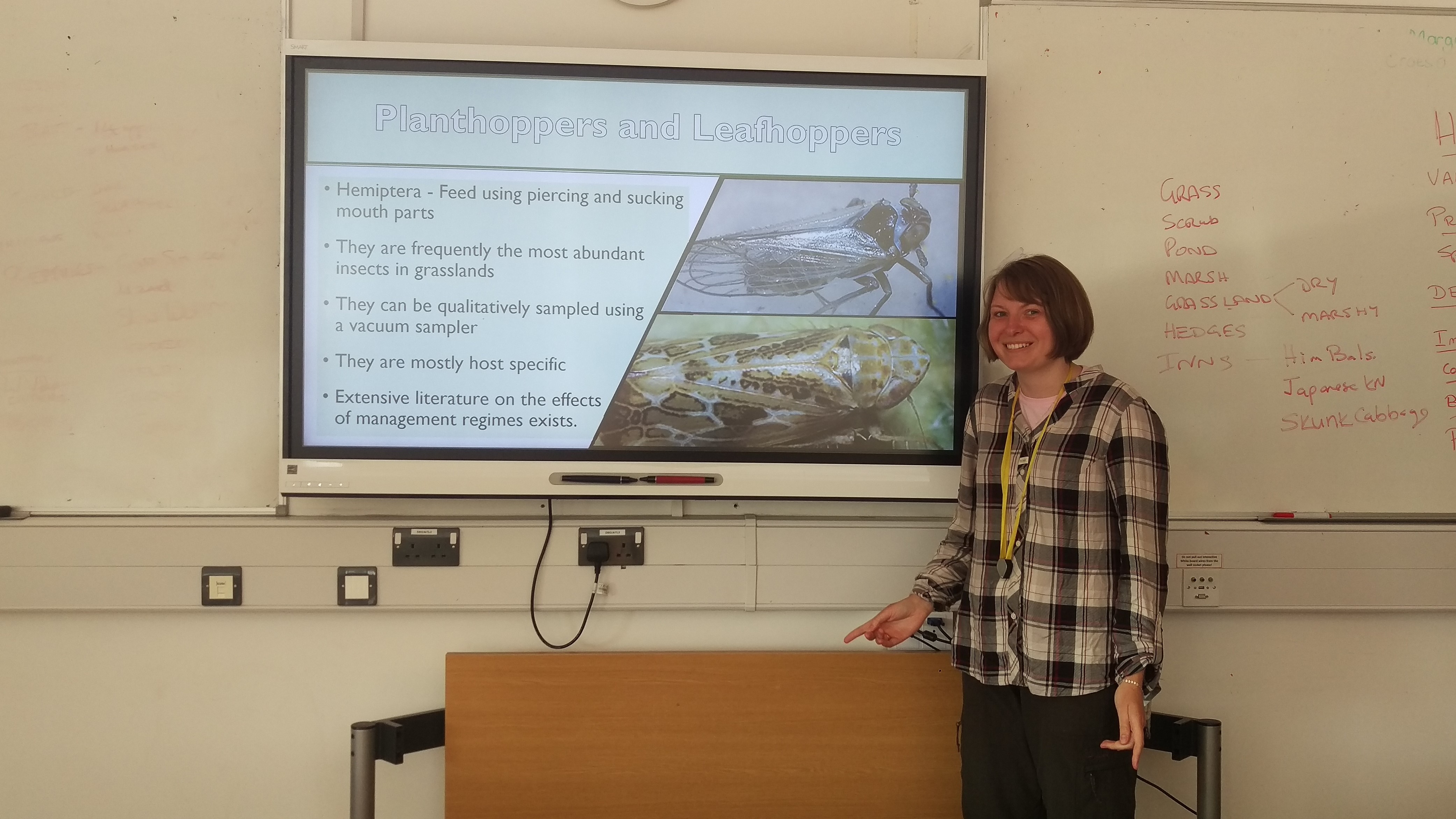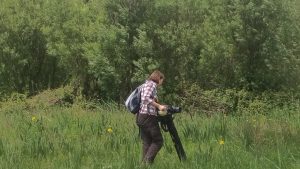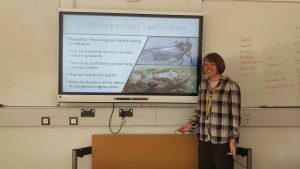
Summer was slow coming but is going fast, we’re already more than half-way through! I’ve been spending it out and about doing lots of fieldwork and attending lots of courses. Most of my courses have been plant-based (or bug-food based from an entomologist point of view). Learning to identify plants is considered vital for ecologists as plants form the basis of habitats and most food-chains. Some planthoppers and leafhoppers are incredibly fussy eaters, specialising on feeding on a single or a few related plant species. Plant identification can therefore aid in hopper identification so, in short, I have been trying to get to grips with plants.
I’ve been on three FSC plant-based courses, Using a Flora, Identifying Difficult Higher Plants and Clovers and Vetches. The courses run by the FSC are all fantastic and I’ve learnt so much from them. Using a flora really helps you to get to grips with “Scary Stace”, the dichotomous key to all naturalised plants in Britain where the language is somewhat technical. It also really helped me learn the diagnostic features for the largest plant families in Britain (which helps you skip the first part of the key). This is a great handout by the Norfolk Wildlife Trust which summarises some of the groups-https://www.norfolkwildlifetrust.org.uk/documents/downloads/cwa/handout-11-identifying-plant-families
Clovers and vetches provided a great in-depth view of the pea family while the difficult higher plants course was a whirlwind tour of all the difficult plant groups in Britain including grasses, sedges, ferns, horsetails, umbellifers and yellow composites. We had a quick look into what the important features are of each group and a go at identification with the wonderful tutors to look over our shoulder. This course was honestly slightly overwhelming for me, I learnt a lot but feel like I will need lots of time and some dedicated courses for each group for me to gain confidence in identification, but this course at least made the groups a little less scary.
I’ve also had the chance to go out and do some entomology fieldwork, collecting my own hoppers which I have been mounting and identifying. I’ve got the hang of identification so now I’m trying to get lots of experience surveying different habitats to get to know the different species assemblages you can expect to find in different areas. My surveys may also provide records for sites which may have never been surveyed for hoppers before (exciting stuff!). I’ve been out to saltmarshes, coalmine restoration sites, Gilfach Nature Reserve for one of Chris Packham’s bioblitz’s and I’m not done yet!
Earlier this month I had the opportunity to help out with the BES summer school at Margam FSC as a student member of CIEEM. The summer school consisted of a whole week of ecology-based talks and activities for London based A-Level students from BME and low-income families, from which they may be the first in their family to consider higher education. While earlier in the week they heard talks from an academic perspective, including everything from soil to animal behaviour with some cool fieldwork thrown in (I’m not jealous at all…), the CIEEM team were there to talk about the practical use of ecology from ecological consultancies attempting to retain wildlife on development sites to land management and other applications. It was a fantastic day where lots of the students were asking really interesting questions. I gave a talk about entomology and biological recording and helped teach and lead group discussions about ecology, conservation, land management and development and talk about the careers in these subject areas. For most students this was a completely new area for them, but they were enthusiastic and quick to learn. The highlight was the bat walk in the evening watching Daubentons swooping over the large pond. The most challenging part for me was giving my presentation. While I was nervous it was great to be talking about a subject I felt knowledgeable and passionate about. I was sharing information about biological recording I felt was genuinely useful for those students who were considering a career in ecology. After an introduction on entomology I spoke to them about equipment, ID resources and how to submit records. Hopefully some of them were interested!
Throughout August I am going to build on this experience, working with primary school age children through The Wildlife Trust of South and West Wales, helping with events such as their Wildlife Watch Club to inspire future entomologists. I will also start September off with running my own full Leafhopper and Planthopper identification day course! Details coming soon!
Summer is almost gone but autumn will give me time to work on my personal project of building my online hopper identification key. I will need to work on which species to include, taking high quality photos and the nitty gritty of identification characters and definitions but it will be very exciting publishing something which will help increase records for this group. This will all lead up to the Natural Talent Showcase Event in November where, as the title suggests, we will showcase our work throughout the year.
This traineeship has already taught me so much and is providing me with amazing opportunities. Thank you so much TCV and Esmee Fairburn Foundation and to National Museum of Wales for hosting me.


